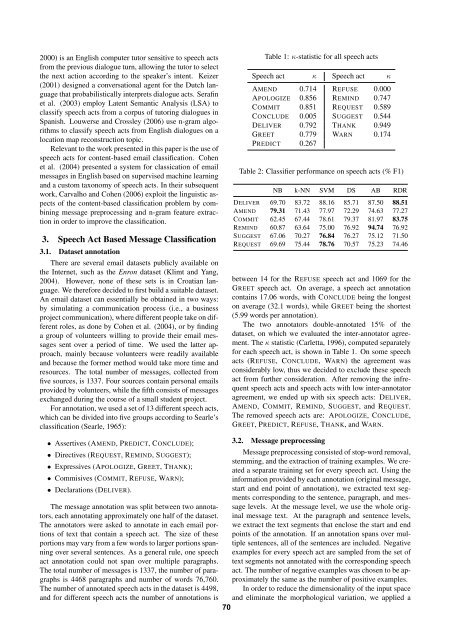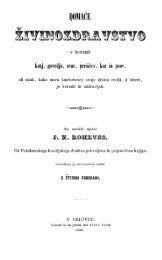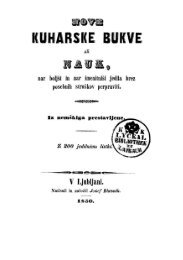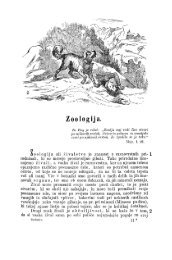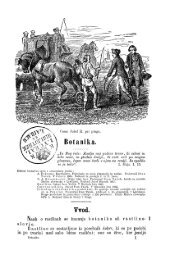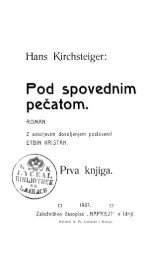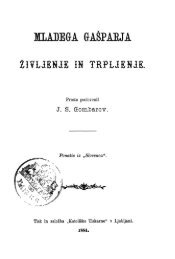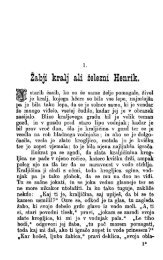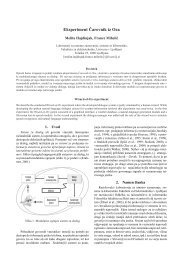Proceedings - Natural Language Server - IJS
Proceedings - Natural Language Server - IJS
Proceedings - Natural Language Server - IJS
You also want an ePaper? Increase the reach of your titles
YUMPU automatically turns print PDFs into web optimized ePapers that Google loves.
2000) is an English computer tutor sensitive to speech acts<br />
from the previous dialogue turn, allowing the tutor to select<br />
the next action according to the speaker’s intent. Keizer<br />
(2001) designed a conversational agent for the Dutch language<br />
that probabilistically interprets dialogue acts. Serafin<br />
et al. (2003) employ Latent Semantic Analysis (LSA) to<br />
classify speech acts from a corpus of tutoring dialogues in<br />
Spanish. Louwerse and Crossley (2006) use n-gram algorithms<br />
to classify speech acts from English dialogues on a<br />
location map reconstruction topic.<br />
Relevant to the work presented in this paper is the use of<br />
speech acts for content-based email classification. Cohen<br />
et al. (2004) presented a system for classication of email<br />
messages in English based on supervised machine learning<br />
and a custom taxonomy of speech acts. In their subsequent<br />
work, Carvalho and Cohen (2006) exploit the linguistic aspects<br />
of the content-based classification problem by combining<br />
message preprocessing and n-gram feature extraction<br />
in order to improve the classification.<br />
3. Speech Act Based Message Classification<br />
3.1. Dataset annotation<br />
There are several email datasets publicly available on<br />
the Internet, such as the Enron dataset (Klimt and Yang,<br />
2004). However, none of these sets is in Croatian language.<br />
We therefore decided to first build a suitable dataset.<br />
An email dataset can essentially be obtained in two ways:<br />
by simulating a communication process (i.e., a business<br />
project communication), where different people take on different<br />
roles, as done by Cohen et al. (2004), or by finding<br />
a group of volunteers willing to provide their email messages<br />
sent over a period of time. We used the latter approach,<br />
mainly because volunteers were readily available<br />
and because the former method would take more time and<br />
resources. The total number of messages, collected from<br />
five sources, is 1337. Four sources contain personal emails<br />
provided by volunteers, while the fifth consists of messages<br />
exchanged during the course of a small student project.<br />
For annotation, we used a set of 13 different speech acts,<br />
which can be divided into five groups according to Searle’s<br />
classification (Searle, 1965):<br />
• Assertives (AMEND, PREDICT, CONCLUDE);<br />
• Directives (REQUEST, REMIND, SUGGEST);<br />
• Expressives (APOLOGIZE, GREET, THANK);<br />
• Commisives (COMMIT, REFUSE, WARN);<br />
• Declarations (DELIVER).<br />
The message annotation was split between two annotators,<br />
each annotating approximately one half of the dataset.<br />
The annotators were asked to annotate in each email portions<br />
of text that contain a speech act. The size of these<br />
portions may vary from a few words to larger portions spanning<br />
over several sentences. As a general rule, one speech<br />
act annotation could not span over multiple paragraphs.<br />
The total number of messages is 1337, the number of paragraphs<br />
is 4468 paragraphs and number of words 76,760.<br />
The number of annotated speech acts in the dataset is 4498,<br />
and for different speech acts the number of annotations is<br />
Table 1: κ-statistic for all speech acts<br />
Speech act κ Speech act κ<br />
AMEND 0.714 REFUSE 0.000<br />
APOLOGIZE 0.856 REMIND 0.747<br />
COMMIT 0.851 REQUEST 0.589<br />
CONCLUDE 0.005 SUGGEST 0.544<br />
DELIVER 0.792 THANK 0.949<br />
GREET 0.779 WARN 0.174<br />
PREDICT 0.267<br />
Table 2: Classifier performance on speech acts (% F1)<br />
NB k-NN SVM DS AB RDR<br />
DELIVER 69.70 83.72 88.16 85.71 87.50 88.51<br />
AMEND 79.31 71.43 77.97 72.29 74.63 77.27<br />
COMMIT 62.45 67.44 78.61 79.37 81.97 83.75<br />
REMIND 60.87 63.64 75.00 76.92 94.74 76.92<br />
SUGGEST 67.06 70.27 76.84 76.27 75.12 71.50<br />
REQUEST 69.69 75.44 78.76 70.57 75.23 74.46<br />
between 14 for the REFUSE speech act and 1069 for the<br />
GREET speech act. On average, a speech act annotation<br />
contains 17.06 words, with CONCLUDE being the longest<br />
on average (32.1 words), while GREET being the shortest<br />
(5.99 words per annotation).<br />
The two annotators double-annotated 15% of the<br />
dataset, on which we evaluated the inter-annotator agreement.<br />
The κ statistic (Carletta, 1996), computed separately<br />
for each speech act, is shown in Table 1. On some speech<br />
acts (REFUSE, CONCLUDE, WARN) the agreement was<br />
considerably low, thus we decided to exclude these speech<br />
act from further consideration. After removing the infrequent<br />
speech acts and speech acts with low inter-annotator<br />
agreement, we ended up with six speech acts: DELIVER,<br />
AMEND, COMMIT, REMIND, SUGGEST, and REQUEST.<br />
The removed speech acts are: APOLOGIZE, CONCLUDE,<br />
GREET, PREDICT, REFUSE, THANK, and WARN.<br />
3.2. Message preprocessing<br />
Message preprocessing consisted of stop-word removal,<br />
stemming, and the extraction of training examples. We created<br />
a separate training set for every speech act. Using the<br />
information provided by each annotation (original message,<br />
start and end point of annotation), we extracted text segments<br />
corresponding to the sentence, paragraph, and message<br />
levels. At the message level, we use the whole original<br />
message text. At the paragraph and sentence levels,<br />
we extract the text segments that enclose the start and end<br />
points of the annotation. If an annotation spans over multiple<br />
sentences, all of the sentences are included. Negative<br />
examples for every speech act are sampled from the set of<br />
text segments not annotated with the corresponding speech<br />
act. The number of negative examples was chosen to be approximately<br />
the same as the number of positive examples.<br />
In order to reduce the dimensionality of the input space<br />
and eliminate the morphological variation, we applied a<br />
70


